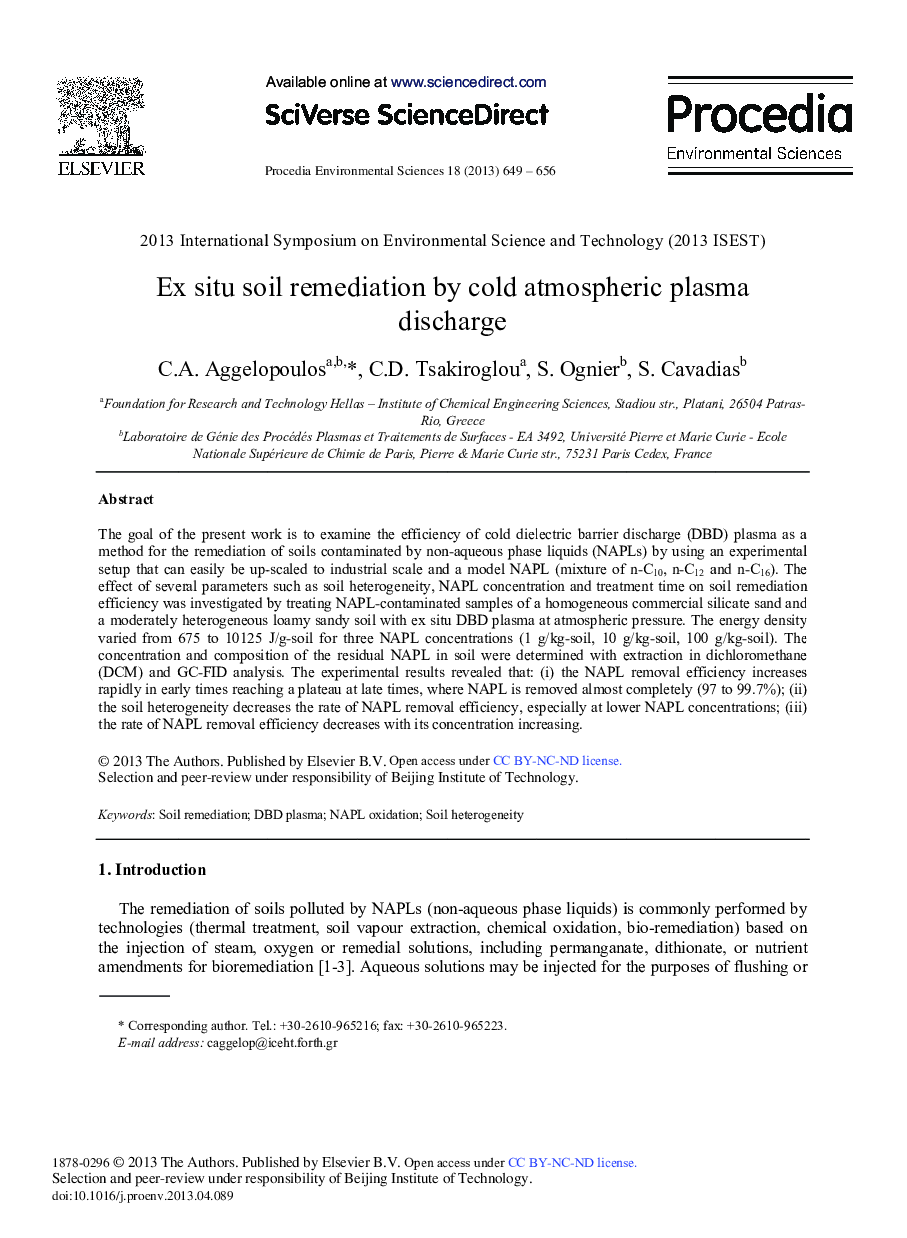| Article ID | Journal | Published Year | Pages | File Type |
|---|---|---|---|---|
| 4403021 | Procedia Environmental Sciences | 2013 | 8 Pages |
The goal of the present work is to examine the efficiency of cold dielectric barrier discharge (DBD) plasma as a method for the remediation of soils contaminated by non-aqueous phase liquids (NAPLs) by using an experimental setup that can easily be up-scaled to industrial scale and a model NAPL (mixture of n-C10, n-C12 and n-C16). The effect of several parameters such as soil heterogeneity, NAPL concentration and treatment time on soil remediation efficiency was investigated by treating NAPL-contaminated samples of a homogeneous commercial silicate sand and a moderately heterogeneous loamy sandy soil with ex situ DBD plasma at atmospheric pressure. The energy density varied from 675 to 10125 J/g-soil for three NAPL concentrations (1 g/kg-soil, 10 g/kg-soil, 100 g/kg-soil). The concentration and composition of the residual NAPL in soil were determined with extraction in dichloromethane (DCM) and GC-FID analysis. The experimental results revealed that: (i) the NAPL removal efficiency increases rapidly in early times reaching a plateau at late times, where NAPL is removed almost completely (97 to 99.7%); (ii) the soil heterogeneity decreases the rate of NAPL removal efficiency, especially at lower NAPL concentrations; (iii) the rate of NAPL removal efficiency decreases with its concentration increasing.
